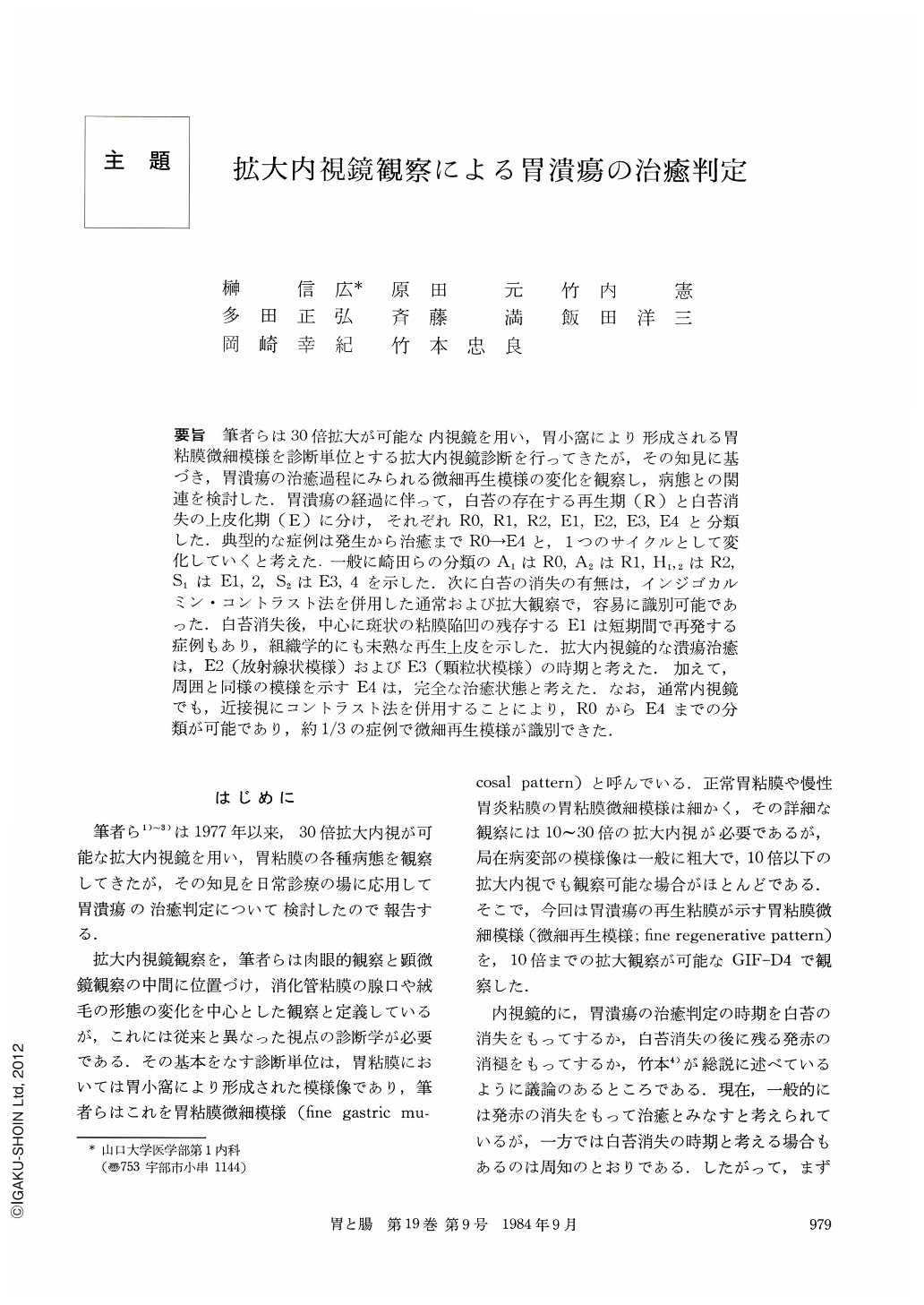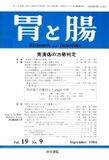Japanese
English
- 有料閲覧
- Abstract 文献概要
- 1ページ目 Look Inside
- サイト内被引用 Cited by
要旨 筆者らは30倍拡大が可能な内視鏡を用い,胃小窩により形成される胃粘膜微細模様を診断単位とする拡大内視鏡診断を行ってきたが,その知見に基づき,胃潰瘍の治癒過程にみられる微細再生模様の変化を観察し,病態との関連を検討した.胃潰瘍の経過に伴って,白苔の存在する再生期(R)と白苔消失の上皮化期(E)に分け,それぞれR0,R1,R2,E1,E2,E3,E4と分類した.典型的な症例は発生から治癒までR0→E4と,1つのサイクルとして変化していくと考えた.一般に崎田らの分類のA1はR0,A2はR1,H1,2はR2,S1はE1,2,S2はE3,4を示した.次に白苔の消失の有無は,インジゴカルミン・コントラスト法を併用した通常および拡大観察で,容易に識別可能であった.白苔消失後,中心に斑状の粘膜陥凹の残存するE1は短期間で再発する症例もあり,組織学的にも未熟な再生上皮を示した.拡大内視鏡的な潰瘍治癒は,E2(放射線状模様)およびE3(顆粒状模様)の時期と考えた。加えて,周囲と同様の模様を示すE4は,完全な治癒状態と考えた.なお,通常内視鏡でも,近接視にコントラスト法を併用することにより,R0からE4までの分類が可能であり,約1/3の症例で微細再生模様が識別できた.
On the basis of our experience of high-magnifying endoscopy of fine gastric mucosal pattern, fine regenerative mucosal patterns were observed and classified in the healing process of gastric ulcer.
The healing process was divided into regenerative stage (R) with ulceration and epithelization stage (E) without white coating. Furtheremore, they were classified into seven types, R0, R1, R2, E1, E2, E3 and E4 (Table 2, Fig. 2, 3). Generally, A1 stage of Sakita's classification showed R0, A2 showed R1, H1 and H2 showed R2, S1 showed E1 and E2, and S2 showed E3 and E4 from onset to healing (Table 3, 4).
The existence of white coating was easily diagnosed by magnifying or conventional endoscopy with indigocarmine contrast method. Inspite of disappearance of white coating, E1 stage showed early ulcer recurrence (Table 5) and incomplete epithelization histologically (Table 6).
Magnifying endoscopic diagnosis of gastric ulcer healing was made at E2 (radiating pattern) and E3 (granular pattern). Furtheremore, E4 stage which showed the fine patterns same as surroudings was considered as the complete ulcer healing.
These fine regenerative patterns were considerably diagnosed by dying and close-up observation using conventional endoscopes in routine examination.

Copyright © 1984, Igaku-Shoin Ltd. All rights reserved.


